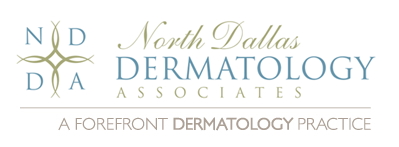5 Nutrients for Better Skin

- Posted on: May 2 2016
 You don’t have to look much further than your bathroom mirror to get a general idea of your health. In most cases, your skin is your most powerful indicator of how well you’re taking care of your body. Overly dry or oily skin, acne, and even signs of aging like wrinkles all have their roots in poor internal health.
You don’t have to look much further than your bathroom mirror to get a general idea of your health. In most cases, your skin is your most powerful indicator of how well you’re taking care of your body. Overly dry or oily skin, acne, and even signs of aging like wrinkles all have their roots in poor internal health.
Avoiding the obvious bad-food culprits is the first step towards better skin – and health – but if you want that Jennifer Aniston-level glow, it’s time to pay attention to the specific nutrients your skin needs.
“Skin problems are actually the body’s way of telling us that something is wrong,” says NDDA’s resident health counselor, Candace Stone. “When our body isn’t getting what it needs, or too much of what it doesn’t, we usually see it pretty quickly on our face. By changing our diets and pinpointing specific nutrients that our skin needs, we can get our bodies back in balance and improve our skin in the process.”
And recent research links younger-looking skin to certain vitamins, minerals and antioxidants that can be found in a variety of common food sources.
Read on for Candace’s guide to the nutrition basics for your best skin . . .
Silica
From skin elasticity to your body’s ability to heal wounds, silica is the superstar. This trace mineral plays a central role in strengthening connective tissue and ramping up muscle, tendon, hair and bone health.
Food Sources: Leeks, green beans, celery, asparagus, garbanzo beans, strawberries, cucumber, mango and rhubarb.
Zinc
If you have acne problems, you might have a zinc deficiency. The mineral plays a role in keeping some of the hormones that that create acne in check, and can help regulate the levels of oil in the skin.
Food Sources: Ginger, pecans, Brazil nuts, oats, fresh oysters, pumpkin seeds, and eggs.
Omega-3 Fatty Acids
Essential fatty acids enable the body to repair skin, maintain flexibility and retain moisture. So if dry or inflamed skin – or whiteheads or blackheads – are your problem areas, low levels of essential fatty acids may be to blame.
Food Sources: Wild salmon and sardines, wild-harvested fish oils, as well as plant-based sources like chia seeds, ground flax seeds and hemp seeds.
Selenium
Damage from excessive ultraviolet light is a well-known cancer risk and contributor to early aging. Selenium can pack a powerful protective punch when it comes to sun exposure – it can help shield skin cells from damage.
Food Sources: Garlic, Brazil nuts, eggs, brown rice, wheat germ, seafood such as tuna and salmon.
Vitamins C and A
Vitamin C reduces free radical damage and Vitamin A promotes skin repair, two basic functions that keep skin looking young. And in both cases, a whole food-based source of the vitamin is better than the synthetic version.
Food Sources: For vitamin C, stock up on parsley, collard greens, red and green bell peppers, guava, kale, turnips, and broccoli. For vitamin A, look for chili peppers, dandelion, carrots, apricots, sweet potatoes, spinach, and cantaloupe.
Got skin health questions? Call NDDA at 214-301-5078 to schedule your 30-minute complimentary consultation with North Dallas Dermatology Associates health consultant Candace Stone!
Posted in: Uncategorized





